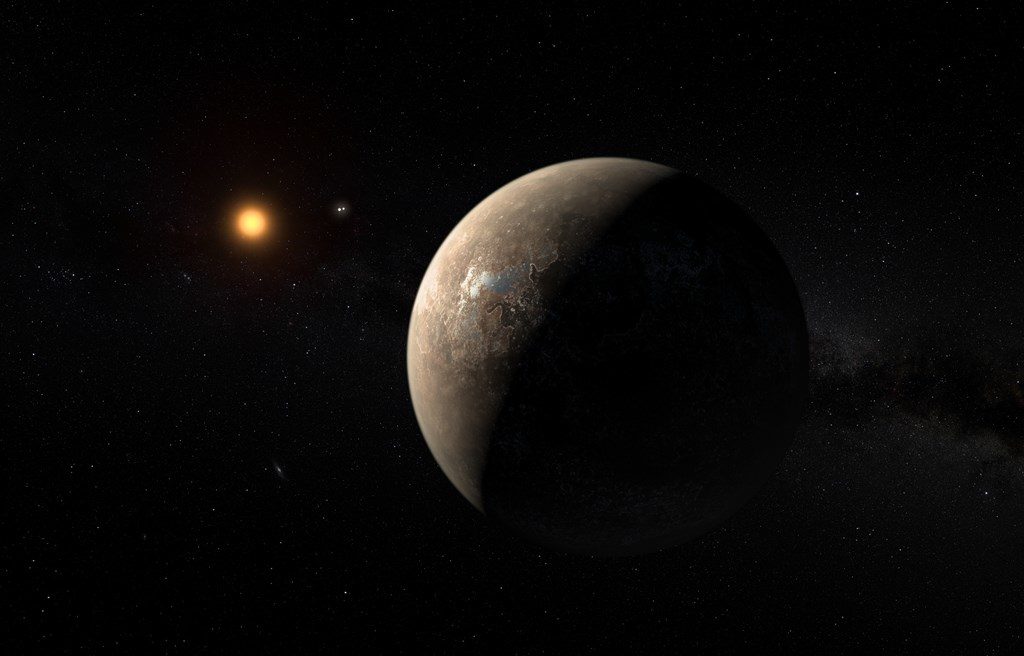Proxima b, a potentially habitable rocky exoplanet
Proxima Centauri, the star closest to the Sun, has a planet. Named Proxima b, this rocky exoplanet is comparable in size to Earth and has a surface temperature compatible with the presence of liquid water... This is the major discovery published on August 25, 2016 in Nature, by an international team of researchers including Julien Morin, from the Laboratoire Univers et Particule de Montpellier (CNRS/Université de Montpellier).

It's the closest exoplanet ever discovered: Proxima b orbits Proxima Centauri, the closest star to the Sun, "only" 4.2 light-years away. A discovery that marks a major turning point in research: Proxima b could well be conducive to life...: The exoplanet is very probably rocky, like our planet, and lies 7 million kilometers from Proxima Centauri, i.e. 20 times closer than the Earth is to the Sun. Too close? No, because. Proxima Centauri, a simple red dwarf, is far less bright than the Sun. Proxima b is therefore well within the habitable zone, and its temperature could allow the presence of liquid water on its surface.
Is Proxima b Earth's twin? More like a distant cousin, if researchers' work is anything to go by. Two teams, most of them French, have shown that, although Proxima b could possibly harbor life, it cannot be considered as a twin to Earth. The history of Proxima b and its star is radically different from that of the Earth and the Sun. The formation of Proxima b, its irradiation by Proxima Centauri, the tidal forces it undergoes and which affect its internal structure and rotation, have no equivalent in the history of our planet.
Detection of rocky planets orbiting active dwarf stars is set to increase in the coming years, with the commissioning of dedicated instruments such as SPIRou. This international near-infrared spectropolarimeter, developed by France, will be commissioned in 2017 at the Canada France Hawaii Telescope (CFHT) atop Hawaii's Mauna Kea volcano. The start of a new era in space exploration.
Illustration: This artist's view shows the Proxima b planet orbiting the red dwarf Proxima Centauri, the nearest star to the Solar System. The double star system Alpha Centauri AB appears in the upper right-hand corner of the image, between the planet and the Proxima star. Proxima b has a mass slightly greater than that of the Earth, and orbits Proxima Centauri within the star's habitability zone, so its surface temperature is compatible with the presence of liquid water.
References: A terrestrial planet candidate in a temperate orbit around Proxima Centauri, by G. Anglada-Escudé et al, August 25, 2016, Nature.